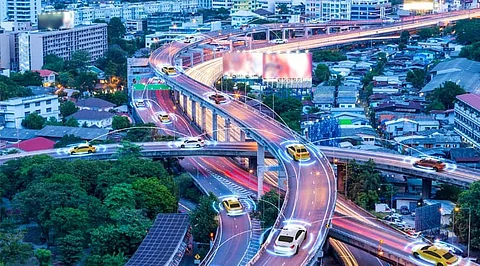

A smart city is, in particular, a city that uses technology to provide facilities and help fix problems in the city. A smart city works like improving transport and convenience, improving public assistance, saving energy, and giving voice to its people. Improving policy effectiveness, waste reduction and disruption, improving economic and social reliability, and maximizing social integration are the primary goals of a smart city.
Individuals engage with smart city environments in various ways through smartphones and other mobile devices as well as smart cars and houses. Pairing the physical infrastructure and facilities of the city with machines and data will minimize costs and increase productivity.
The advent of new and interesting innovations that strive to keep cities smarter has only significantly contributed to this idea, and creating an intelligent transport management system must be one aspect of developing a smart city that is critically significant.
The Intelligent Transportation System (ITS) can fundamentally change the way people travel in smart cities and metro systems. In offering multiple transport modes, developed infrastructure, traffic and connectivity management strategies, ITS presents a better solution. In order to provide customers with access to a better, easier and quicker way to travel, it uses a range of electronic, wireless and networking technologies.
According to Smart City Press, "Market reports estimate an annual growth rate of 25.1% in the smart transportation segment for coming five years. From USD 72.05 Billion in 2016 it is expected to reach USD 220.76 Billion by 2021. The major proponents of this growth are smart cities, need for public security and safety and government's initiatives to improve present day transportation infrastructure."
Transport technology advances are fundamentally developed out of needs such as performance, convenience, and security. Scientists and researchers in the transport industry work as a team to guarantee that these emerging developments deliver quicker, safer and with the lowest possible assets and get more people (or items) to their destinations. This is why we've seen a switch from coal-powered trains to super bullet trains, for instance.
The Internet of Things implies that it is possible to link all individuals and objects across networks. These extensive channels could affect various areas of our day-to-day driving such as route design, emergency preparedness, security.
Big data is used to save traffic and ease congestion by assisting in traffic analysis and planning. Sensors built on transportation systems and fast vehicles help firms to gather streams of data from transportation agencies'.
AI can make traffic more effective, mitigate congestion problems, facilitate parking and enhance car and ride sharing. Since AI helps to preserve the movement of traffic congestion, it can also cut vehicle fuel usage while it is static and remove pollutants and urban development.
Mobility as a service (MaaS) is a number of digital technologies aimed at improving the reliability and simplicity of transportation. MaaS tries to incorporate all facets of consumer experiences into a single service or framework that is user-friendly. This involves planning, scheduling, issuing tickets, transactions, and alerts for trips.
A dynamic infrastructure of technological advancements and collaboration between the public and private sectors makes MaaS real. Mobility as a platform for services leverages these innovations and this collaborates to build apps and services that contribute to efficiency of transport in real time and travel preferences.
As per reports of Smartrak, "According to the UN, 68% of the world's population is projected to live in urban areas by 2050. This poses a major challenge to those in charge of planning our transport infrastructure; sooner or later we're going to see diminishing returns on road transport infrastructure. The unfortunate truth is that regardless of how many new roads we build, there is a hard limit to the number of vehicles that can be on the roads at any one time."
Join our WhatsApp Channel to get the latest news, exclusives and videos on WhatsApp
_____________
Disclaimer: Analytics Insight does not provide financial advice or guidance. Also note that the cryptocurrencies mentioned/listed on the website could potentially be scams, i.e. designed to induce you to invest financial resources that may be lost forever and not be recoverable once investments are made. You are responsible for conducting your own research (DYOR) before making any investments. Read more here.
